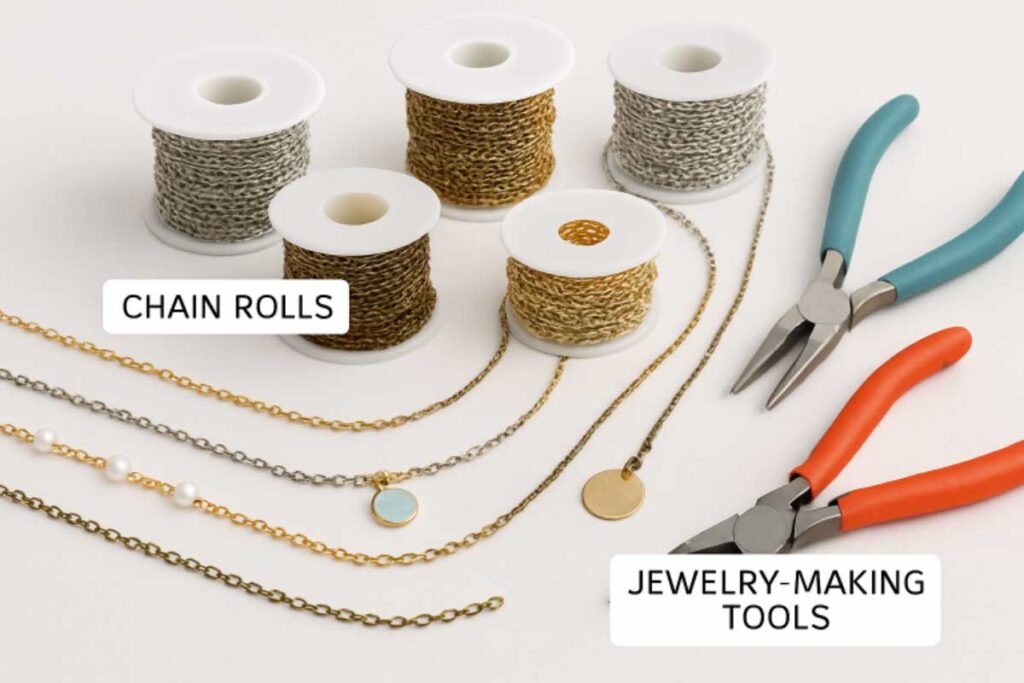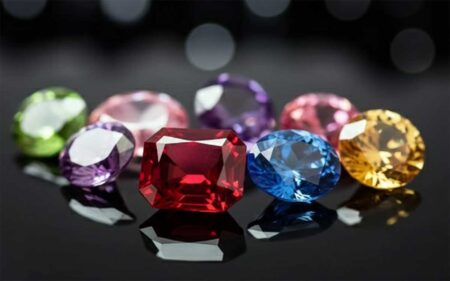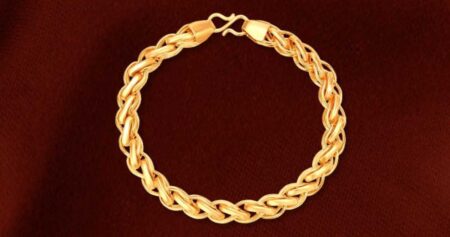Key Takeaways
- Chain rolls are foundational elements adaptable to minimalist and bold jewelry alike.
- They enhance both aesthetics and functionality in modern jewelry design.
- Mastering new techniques and drawing inspiration from contemporary designers can unlock more creative uses of chain rolls.
Chain rolls have evolved into indispensable tools in the modern jewelry designer’s toolkit. With their exceptional versatility and timeless elegance, they serve as the backbone for a variety of creative expressions, from delicate adornments to bold statement pieces. Contemporary artisans increasingly experiment with materials and techniques, finding new ways to express individuality within the scope of jewelry craft. If you’re searching for high-quality chains to bring your creative visions to life, exploring a 14k gold chain roll can provide both beauty and durability for your next jewelry project.
Whether you’re a seasoned designer or an enthusiastic hobbyist, incorporating chain rolls into your designs opens up a world of possibilities. Their repeatable patterns and reliability make them ideal for crafting unique pieces that mirror current fashion sensibilities while maintaining a sense of classic allure. By understanding a range of techniques and drawing inspiration from both history and today’s trendsetters, you can ensure your creations stand out in the ever-evolving world of jewelry design.
Innovative Applications of Chain Rolls
Looking beyond traditional chain use brings forth endless opportunity for experimentation and artistry. Designers are now taking this principle even further, using chain rolls to push creative boundaries and sculpt jewelry that is as unique as its wearer. This reinvention is particularly evident in layered necklaces, mixed media creations, and statement earrings that seamlessly blend classic techniques with fresh perspectives.
1. Layered Necklaces
Layering multiple chain rolls, varying in gauge, style, and length, creates depth and a dynamic look. This approach is on-trend, allowing wearers to easily create personalized combinations by stacking several dainty chains or mixing chunky and delicate styles. Enhancing each layer with personal pendants or gemstones adds character, transforming a simple assembly into a fashion-forward statement.

2. Mixed-Media Bracelets
Combining chain rolls with alternative materials, such as supple leather, vibrant threads, or unexpected textiles, yields mixed-media bracelets. This fusion not only offers tactile and visual contrast but also appeals to contemporary audiences seeking jewelry that reflects eclectic tastes. Artisans often use these pieces to showcase the unique color, texture, and movement characteristics of modern wearable art.
3. Statement Earrings
Segmented chain rolls offer the flexibility required to create dramatic, dangling earrings. By incorporating beads, gemstones, or meaningful charms into the drops, makers create a sense of playfulness and individuality. These bold pieces are perfect for customers who want to express their personality through their accessories.
Techniques for Enhancing Chain Roll Designs
Advanced jewelry-making techniques can elevate the humble chain roll into a sophisticated work of art. Embracing methods such as wire wrapping, soldering, and patina, artisans transform simple chains into intricate, bespoke items that are loaded with personal significance. As noted in The Spruce Crafts’ tips for working with chain, understanding how to manipulate and finish chain effectively can unlock countless creative possibilities, allowing each piece to reflect both technical mastery and artistic vision.
1. Wire Wrapping
Utilizing wire wrapping provides a window to intricate design. When stones or beads are artfully intertwined with a chain roll, even basic links become focal points. This technique is an excellent way to introduce delicate details, encourage creativity, and infuse pieces with a handcrafted sensibility.
2. Soldering
Soldering offers unparalleled avenues for custom creation. By binding links together or crafting chain segments from scratch, makers exercise complete control over size, form, and finish. This method is invaluable not only for repairing but also for developing entirely new artistic statements tailored to individual tastes and commissions.
3. Patination
Applying various patinas, such as liver of sulfur for silver or antique finishing for gold, imparts character and depth to chain rolls. This process is beloved by designers who wish to evoke a sense of history, nostalgia, or drama. Patinated chains work particularly well in heirloom-inspired collections or for pieces intended to tell a visual story.
Inspiration from Contemporary Designers
Many of today’s most influential jewelry designers are reimagining the chain through innovation and sustainable practice. Their pioneering work demonstrates that age-old elements, such as chain rolls, are prime canvases for redefinition in the 21st century.
1. Upcycled Materials
Eco-conscious creators are integrating upcycled industrial chain rolls and non-traditional materials to produce visually arresting, environmentally responsible pieces. By redirecting potential waste into coveted jewelry, these designers contribute to the sustainable fashion movement without sacrificing artistry.
2. Chainmaille Revival
Historic chainmaille techniques have found new life in the hands of modern artisans, who weave intricate, contemporary patterns with chainmaille rolls. This blend offers a compelling fusion of old-world craft and modern flair, appealing to clients who appreciate jewelry as both wearable art and a testament to skilled handiwork.
Conclusion
Chain rolls are essential ingredients for creative exploration in jewelry making. Their versatility allows artisans to move seamlessly between tradition and innovation, crafting pieces that are both fashionable and timeless. By adopting new techniques and drawing from both contemporary and historic inspiration, jewelry makers can continue to redefine what is possible with this singular, elegant foundation.





